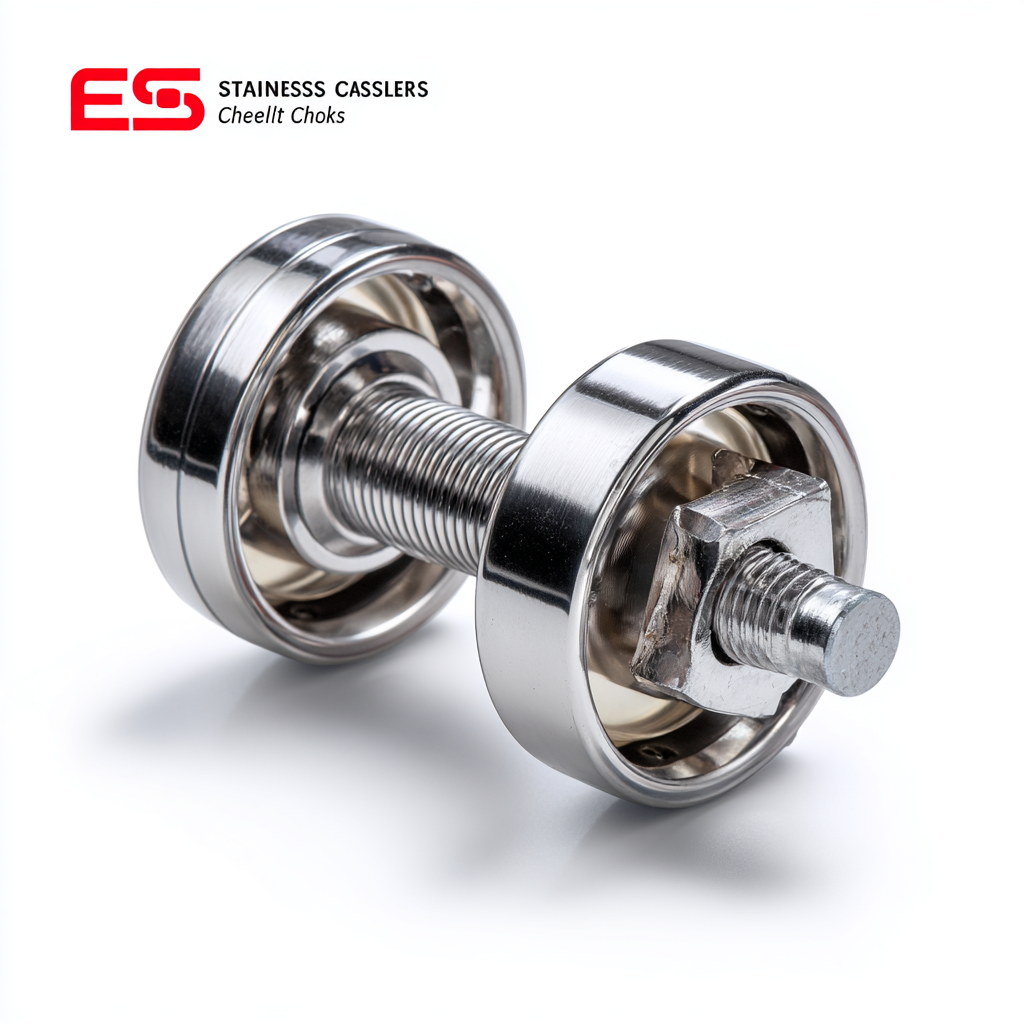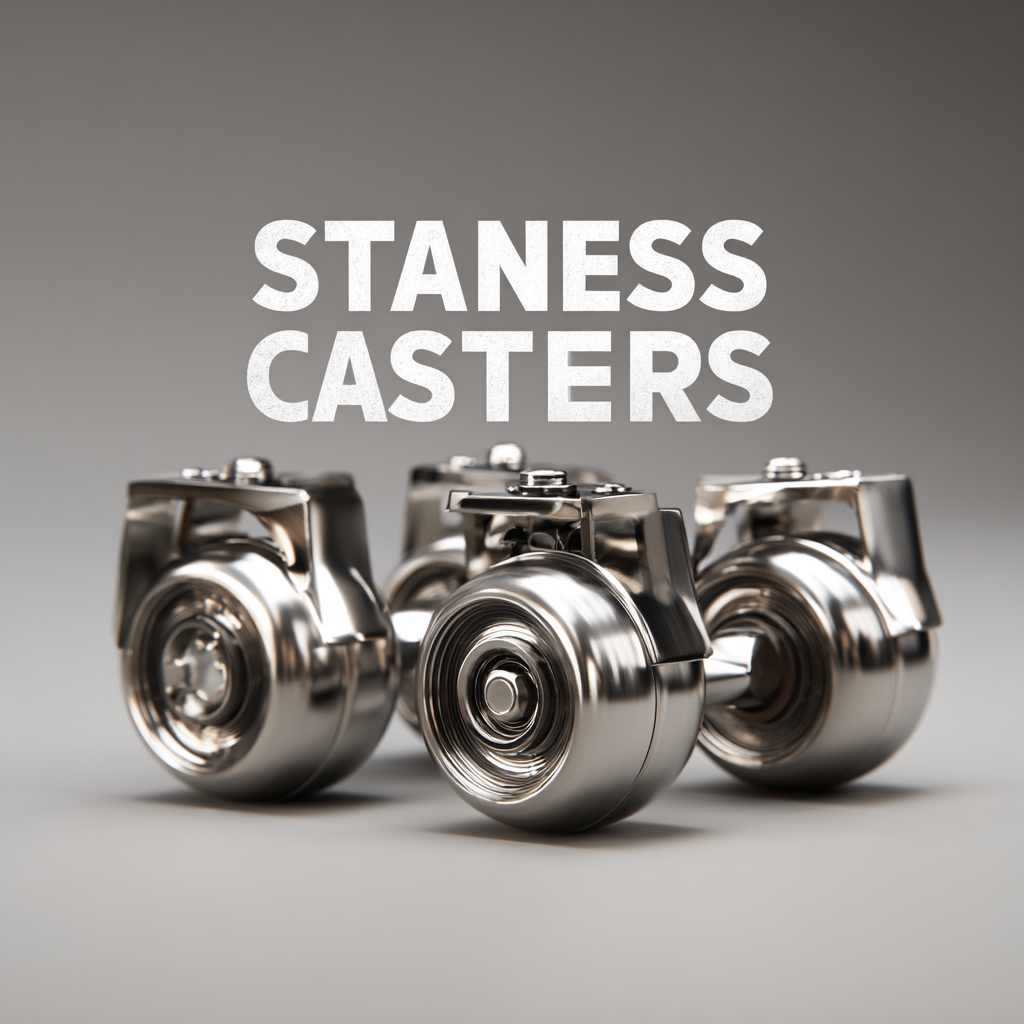
Essential Checklist for Choosing the Best Stainless Casters for Your Business Needs
When it comes to outfitting your business with the right equipment, the choice of stainless casters can significantly impact both operational efficiency and safety. These essential components are not just simple accessories; they are crucial for enhancing mobility, stability, and overall productivity in various industrial environments.

With numerous options available in the market, selecting the best stainless casters tailored to your specific needs can be overwhelming. This blog aims to provide a comprehensive checklist that highlights critical factors like load capacity, wheel materials, and industry production standards to ensure you make an informed decision.
Whether you're in manufacturing, warehousing, or retail, understanding these elements will empower you to choose stainless casters that not only meet your requirements but also contribute to the longevity and functionality of your business operations.
Key Factors to Consider When Selecting Stainless Casters for Your Business
When selecting stainless casters for your business, several key factors come into play that can significantly impact performance and efficiency. First and foremost, consider the load capacity of the casters. Assess the weight of the items they will carry, ensuring the casters can support not only the load itself but also any potential overloading that may occur during regular use. Stainless steel casters typically offer superior strength and durability, making them ideal for heavy-duty applications in various industries.
Another critical aspect to evaluate is the type of wheel material. Different environments call for different wheel compositions, particularly in terms of floor surfaces and exposure to chemicals or moisture. For example, polyurethane wheels provide excellent floor protection and are suitable for smooth surfaces, while rubber wheels may offer better shock absorption on rougher terrains. Furthermore, consider the wheel diameter, as larger wheels can glide over obstacles more easily, enhancing mobility.
Lastly, examine the braking system of the casters as it plays a vital role in safety and stability. Casters with locking mechanisms ensure that equipment remains securely in place when not in motion, reducing the risk of accidents in busy workspaces. By focusing on load capacity, wheel material, and braking features, you can make an informed decision that meets the unique demands of your business.
Understanding Different Types of Stainless Casters and Their Applications
When it comes to selecting the right stainless casters for your business, understanding the different types and their applications is crucial. Stainless casters are widely appreciated for their durability, corrosion resistance, and adaptability across various environments. For heavier loads, heavy-duty stainless steel casters are ideal, as they can typically support significant weight while providing stability. These casters are commonly used in warehouse settings and manufacturing plants, offering the reliability required for transporting large materials.
On the other hand, if you require mobility in more sensitive environments, such as cleanrooms or food processing areas, then swivel stainless casters with brakes might be the best choice. These casters not only enable easy maneuverability but also allow for secure placement, preventing unintended movement when stationary. Additionally, specialized casters like polyurethane-coated stainless casters are tailored for environments where floor protection is paramount, reducing the risk of damage while ensuring smooth operation. By identifying the specific needs of your operation, you can ensure the selection of the right stainless casters that will enhance efficiency and safety in your workspace.
Evaluating Load Capacity and Durability for Your Caster Needs
When selecting stainless casters for your business, evaluating load capacity and durability is paramount. Industrial standard tests indicate that casters must withstand weight limits ranging from 200 to 1,200 pounds, based on their design and intended use. It’s crucial to assess the weight of the items they will carry, ensuring that the casters can handle 125% of the maximum load for safety and longevity. A study from the Caster and Wheel Manufacturer Association highlights that businesses experience a significant reduction in maintenance costs—up to 30%—when utilizing appropriately rated casters.

Tips: Always consider the operating environment of your casters. For instance, if the casters will be used in wet or corrosive environments, choose stainless steel options with high corrosion resistance. Check the hardness and material of the wheel, as softer wheels provide better traction and shock absorption but may wear down more quickly under heavy loads.
Additionally, durability involves more than just load capacity; factors such as wheel diameter and tread material play a critical role. According to the Industrial Caster Standards, larger wheels offer improved maneuverability and ease of rolling over obstacles, which is essential for optimizing workflow. Selecting casters with the appropriate tread material can further enhance their lifespan, particularly if they are engineered to minimize wear under constant heavy use.
The Importance of Wheel Size and Material in Caster Performance
When selecting stainless casters, the size and material of the wheels play a crucial role in ensuring optimal performance and longevity. According to a report by the Caster and Wheel Manufacturing Association, the diameter of the wheel significantly affects the load capacity and mobility. Caster wheels with a larger diameter can distribute weight more evenly, thus reducing floor wear and enhancing maneuverability. For instance, a caster with a 6-inch wheel can typically support up to 1,000 pounds, while a smaller 4-inch wheel might only bear 600 pounds. This information is vital for businesses looking to transport heavy loads efficiently.
In addition to wheel size, the material of the wheel also influences performance. Stainless steel casters are favored for their corrosion resistance, particularly in environments where exposure to moisture or chemicals is prevalent. A study by the National Association of Manufacturers highlights that casters made from polyolefin or thermoplastic rubber are less prone to deformation and provide better traction, which is especially beneficial in high-traffic areas. Selecting the right combination of wheel size and material can enhance operational efficiency and reduce maintenance costs, ultimately contributing to a smoother workflow in any business setting.
Essential Checklist for Choosing the Best Stainless Casters for Your Business Needs
This chart presents an essential checklist for evaluating the best stainless casters for your business needs, focusing on critical metrics such as wheel size, load capacity, material quality, and cost. Optimizing these elements will enhance caster performance and suitability for different applications.
Tips for Maintenance and Care of Stainless Casters to Extend Their Lifespan
When selecting stainless casters for your business, it's essential to consider both their initial quality and the maintenance strategies that will ensure they last. Stainless steel casters are highly regarded for their durability and resistance to rust and corrosion, making them perfect for various industrial applications. According to industry reports, properly maintained stainless casters can have a lifespan of up to 10 years or more, significantly reducing replacement costs and maximizing operational efficiency.

To extend the lifespan of your stainless casters, regular maintenance is crucial. Simple practices such as cleaning them with mild soap and water can prevent the buildup of debris and corrosive agents. Moreover, inspecting the wheels and bearings for wear and tear will help identify issues before they escalate. Studies have shown that businesses that implement routine maintenance experience a 20-30% reduction in equipment-related downtime, which translates directly to enhanced productivity. By investing in both quality casters and a thorough maintenance plan, companies can ensure their operational efficiency remains uncompromised for years to come.
